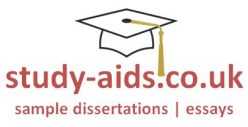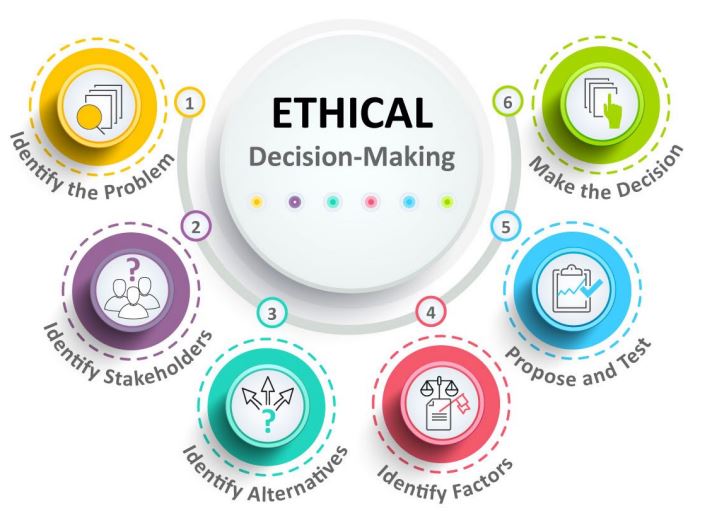Ethical Decision Making In Business
Ethical Decision Making In Business – The daily running of a business entails various ethical issues and considerations. Every business organization must understand different business ethics and ethical approaches to make rational decisions in diverse situations. This paper explores business ethics and values by considering three scenarios where ethical dilemmas exist, with the situations calling for ethical decision making.
In the first instance, the manager is forced to fire 500 employees to save the business, which employs over 100,000 people, from bankruptcy. The manager employs the five ethical approaches, which include utilitarian, rights, common good, fairness and justice, and virtue approach. In the NHS case study, the institute must decide whether to approve beta interferon drug based on its proved clinical efficacy only or to consider its cost effectiveness since the drug costs up to £10,000 per patient per year.
Finally, BDL Company has a policy of not hiring people over 50 years old as it considers young people to be more productive since ageing is known to diminish a person’s cognitive functioning, especially in speed. However, this policy is challenge by the provisions of the Age Discrimination in Employment Act, which prohibits employers from practicing age-related discrimination. The three scenarios exhibit challenging ethical dilemmas that require a careful application of ethical approaches and theories.
Ethical Decision Making Considerations and Values
There are various ethical considerations and values that impact the daily running of a business. As a result, it is important for organizations to understand different business ethics and ethical approaches to make rational decisions in diverse situations.
For instance, the manager in the first case below is required to fire 500 employees to save the business that employs over 100,000 people from bankruptcy. In the process, the management has to consider such issues as acting for the common good, which means firing the few to save the majority while still observing their rights to truth, justice, and fairness.
In the NHS case study, the body must decide whether to approve beta interferon drug based on its proved clinical efficacy only or to consider its cost effectiveness since the drug costs up to £10,000 per patient per year. Finally, BDL Company does not hire people over 50 years old since ageing has been shown to significantly reduce performance in cognitive tasks. However, the Age Discrimination in Employment Act prohibits employers from practicing age-related discrimination, which makes the firm appear to be acting against the law.
Firing Some Employees to Save Company from Bankruptcy
The manager’s actions can be explained using the five approaches to ethical decision making, which are utilitarian, rights, fairness and justice, common good, and virtue approaches. To begin with, the utilitarian approach requires that an ethical action should be the one that promotes the greatest good and least harm to the affected parties (Velasquez et al.).
In the scenario under analysis, firing the 500 employees to save the company can be seen as ethical since the collapse of the firm would harm over 100,000 employees, the business owners, the suppliers, and other stakeholders.
Additionally, the manager applies the rights approach in dealing with the fired workers. The approach states that people have the right to truth, privacy, not to be harmed, and self determination among others (Velasquez et al.). By informing them on time and writing them recommendation letters, the manager ensures that the rights of the employees are respected.
The fairness and justice approach might be challenging to determine in this situation since the criteria used to decide the employees to fire is not explained, thus making it hard to determine whether discrimination or favoritism are used. However, the common good approach is evident since retrenching the 500 helps save the firm and the many people depending on its survival.
The principle dictates that ethical actions are those that promote the welfare of everyone, and the manager not only safeguard the interests of the organization but also of the fired employees (Velasquez et al.).
Finally, the manager applies the virtue approach in his dealing with the retrenched staff. Virtue model demands that one acts according to certain ideals, such as compassion, love, honesty, fairness, and integrity among others (Velasquez et al.). The manager not only explains apologetically the reasons for the firing, but he also writes recommendation letters to the affected workers to assist them in finding new jobs.
These approaches have contributed differently to the organization’s overall benefits. For instance, the utilitarian approach has a considerably high impact on the firm’s survival since it directly supports the downsizing of the labor force. Secondly, the common good approach considers the actions that most benefit the larger community and, thus, supports the firing of some to save the majority from negative effects of a collapsed firm.
Moreover, the rights approach benefits both the organization and the dismissed employees. Whereas the workers have the right as humans to be treated as ends and not means, the company also retains its right as an entity to either hire or fire depending on prevailing situations. However, fairness and justice approach seems to be more beneficial to the employees; if the company acted fairly in choosing the workers to discharge, the main effects would be on the employees by shielding them from unfair dismissal.
Similarly, virtue approach seems to be applied by the manager to safeguard the interests of the employees more than those of the company. Nevertheless, even the approaches that seem to benefit the workers more than the firm are still significant for the organization, By making the former feel contented with the decision, the company avoids negative outcomes such as lawsuits.
Clinical and Cost Effectiveness in New Drug Approval
In reference to the case study, the NHS approval of a new drug should be based on both its clinical and cost effectiveness. For instance, whereas the new multiple sclerosis drug – beta interferon – has demonstrated effectiveness in alleviating the effects of the disease, it is significantly costly at £10,000 per person per year (Fisher and Lovell 64).
Cohen and Reynolds define cost effectiveness as the value of a new medication in regard to the increased health benefits it brings in comparison to the increase in cost (2119). The purpose of cost effective analysis is to promote rational decision making for both the clinicians and policymakers. Without this practice, any new drug that proves to be effective in causing the intended outcome would be approved even if its cost were far too high when balanced against the supposed benefits.
Therefore, the National Institute for Clinical Excellence (NICE) is right in prioritizing cost effectiveness and the creation of an economic model that will enable the relevant parties to understand the costs and benefits of the medication (Fisher and Lovell 64). Although the need to have the treatment is so crucial for the MS patients, it is equally important for the relevant agencies to make the analysis to understand fully how much the drug will benefit them clinically and the costs involved.
The cost effectiveness criterion for approving the new drug focuses on consequentialism approach to ethical decision making. Consequentialist or teleological ethics are based on the assumption that the consequences of an action determine whether it is good or bad (Fisher and Lovell 124). Therefore, decisions that lead to good outcomes are to be considered ethical.
In the case study, approving the new drug for free availability on the NHS without considering its cost effectiveness would have some considerable consequences. If the drug’s high cost is not proportional to the benefits to the patients, the users would run the risk of paying so heavily for less significant clinical benefits. The chief executive of NICE emphasizes the critical importance of evidence-based guidance in regard to the medicine’s cost effectiveness and considers delay in approving it to be in the best interest of MS patients (Fisher and Lovell 65).
In doing so, the institute appears to be considering the consequences of the final decision to the patients of MS who must bear the high costs of the new drug. Therefore, the use of cost effectiveness as a criterion by the NHS for the approval of new drugs is based on the consequentialist approach.
The delay by the NHS to give its final decision concerning the approval of beta interferon demonstrates an issue of ethical decision making. The ethical issue arises from the consideration that the drug has been shown to be effective in controlling the symptoms of MS, but it is also so costly, thus raising the question of cost effectiveness (Fisher and Lovell 64).
The institute must determine the best cause of action given that the patients have the right to access the medicine, while the organization is mandated with the responsibility of ensuring the users get the best deal when benefits are weighted against costs. In fact, the appraisal committee had initially indicated that the drug would require a considerable reduction in price to attain cost effectiveness (Fisher and Lovell 65).
Since the institute promised to make transparent the process of creating its economic model with the results being made public for scrutiny and comment from the interested parties, it could be assumed to be acting with the best interest to the patients under consideration. Therefore, the delay by the NHS in giving a final verdict is based on the need to make the most ethical decision.
Excluding Those above 50 Years Old from Employment
BDL’s policy of excluding those above 50 years old from employment may be taken to be discriminative. In fact, the U.S. has the Age Discrimination in Employment Act (ADEA) that was signed into law in 1967 and prohibits employers from showing favoritism on the basis of age (Neumark 1).
Whereas the act had initially set the limit at 65 years, thereby prohibiting age-related discrimination for people between 40 and 65 years of age, the limit was eventually removed (Neumark 1). Therefore, in the U.S., no employer is supposed to base their decision concerning a job applicant on the basis of their actual or assumed age since mandatory employment was eliminated for all ages.
In the UK, the majority of citizens also view age-related decisions by employers as discrimination, with the concept of ageism emerging as a common term (Loretto et al. 281- 282). Most employees and job seekers view ageism as equal to any other form of favoritism and express their desire to have legislative protection introduced in the law to curb the practice among employers.
Although the concept of age discrimination took long to enter scientific and popular discourse in the UK, increased lobbying could make it to be cemented in law, thus prohibiting employers from practicing ageism in their workplaces. In the 1990s, Britain experienced rising concerns over age discrimination due to an increase in early exit from the labor market for older workers (Lorettto 280). Nevertheless, the UK showed considerable reluctance in formulating laws to protect workers and potential employees from ageism.
However, BDL Company may defend their policy using the rights approach. As an entity, the firm has a right to decide how it runs its business, including hiring and firing. Although this approach appears to be focused on individual’s rights to self-determination and respect for their choices, the owners of BDL may consider themselves as individuals constituting a single entity that has the right to determine who is fit to work for them in line with their mission, vision, and objectives (Velasquez et al.).
Moreover, the firm could argue that their policy is for the good of the business since past studies have established that age affects various cognitive functions, especially speed processing. According to Murman, normal aging leads to significant reduction in performance on various cognitive tasks that require a person to process and transform information quickly (111). These functions include working memory and process speed among others. Since BDL is a shoe making company, most workers must be involved in tasks requiring considering cognitive functioning, which older people might lack.
Eckert et al. affirm the effects of age on cognition, with their findings on brain changes indicating that “a frontal pattern of gray matter and white matter variation were uniquely related to age-related declines in processing speed…” (1). Therefore, it is evident that people above 50 years may not be as productive as young adults, which might explain BDL’s decision not to hire them.
Conclusion
To sum up, there are various ethical considerations and values that impact the daily running of a business. An entity must be conversant with various business ethics and ethical approaches to deal with various situations and make rational decisions. For instance, in the case of the company that needs to fire 500 employees to save the business from bankruptcy, the management has to consider such issues as acting for the common good, which means firing the few to save the majority while still observing their rights to truth, justice, and fairness.
Similarly, ethical issues arise where NHS must decide whether to approval beta interferon based on its proved clinical efficacy only or to consider its cost effectiveness as well. In the end, the institute considers the lack of cost effectiveness as a major factor.
Finally, BDL Company has to contend with the issue of hiring people over 50 years old, considering that ADEA prohibits employers from practicing age-related discrimination, while science has established that ageing reduces performance in cognitive functions significantly. Although the firm’s policy may be seen as discriminatory, it has the right to run its operations to its best interests.
Works Cited
Cohen, David J, and Matthew R. Reynolds. “Interpreting the Results of Cost-Effectiveness Studies.” Journal of the American College of Cardiology, vol. 52, no. 25, 2008, pp. 2119-26.
Eckert, Mark A., et al. ‘Age-Related Changes in Processing Speed: Unique Contributions of Cerebellar and Prefrontal Cortex.” Frontiers in Human Neuroscience, vol. 4, Art. 10, 2010, pp. 1-14.
Fisher, Colin, and Alan Lovell. Business Ethics and Values: Individual, Corporate and International Perspectives. 2nd ed., Pearson Education Limited, 2006.
Loretto, Wendy, et al. “Ageism and Employment: Controversies, Ambiguities and Younger People’s Perceptions.” Ageing and Society, vol. 20, 2000, pp. 279-302.
Murman, Daniel L. “The Impact of Age on Cognition.” Seminars in Hearing, vol. 36, no. 3, 2015, pp. 111-21.
Neumark, David. “The Age Discrimination in Employment Act and the Challenge of Population Aging.” NBER Working Paper Series 14317, National Bureau of Economic Research, 2008.
Velasquez, Manuel, et al. “Thinking Ethically.” Markkula Center for Applied Ethics.
Relevant Ethical Decision Making Posts
Business Management Dissertation Topics
If you enjoyed reading this post on ethical decision making, I would be very grateful if you could help spread this knowledge by emailing this post to a friend, or sharing it on Twitter or Facebook. Thank you.






